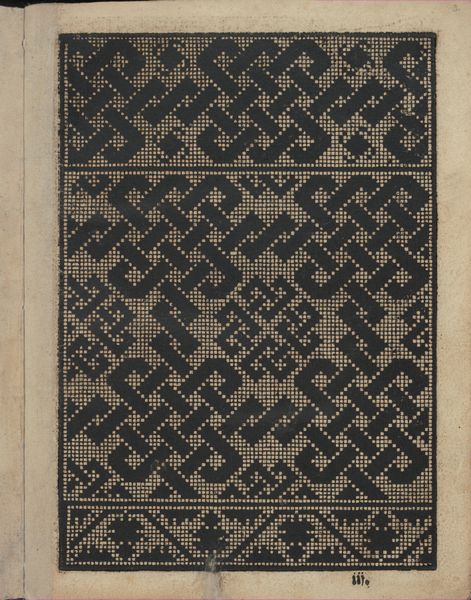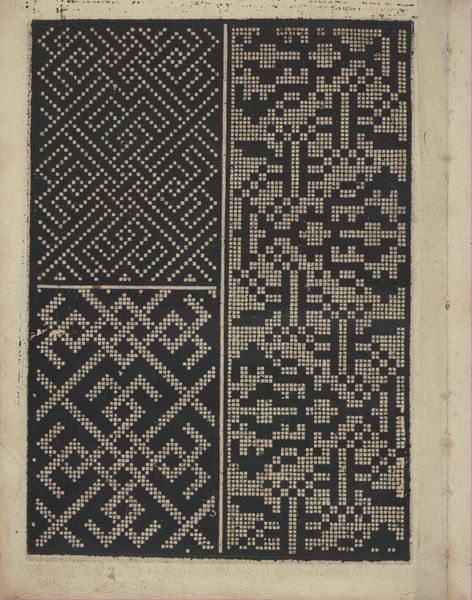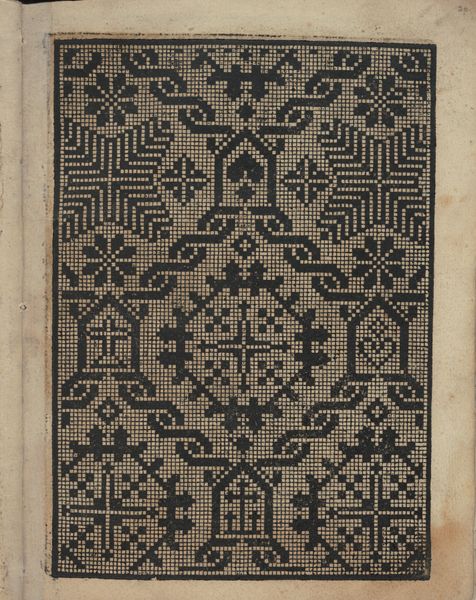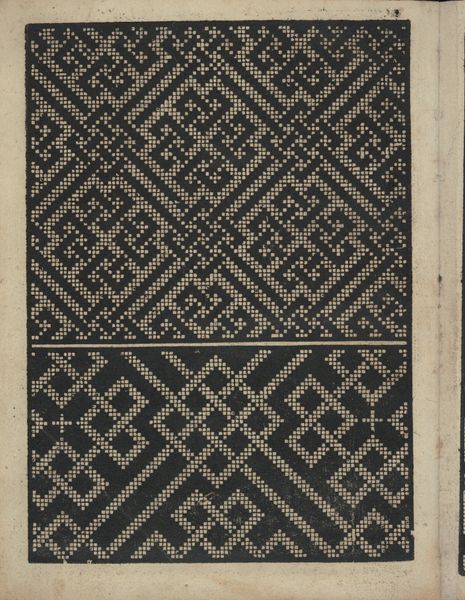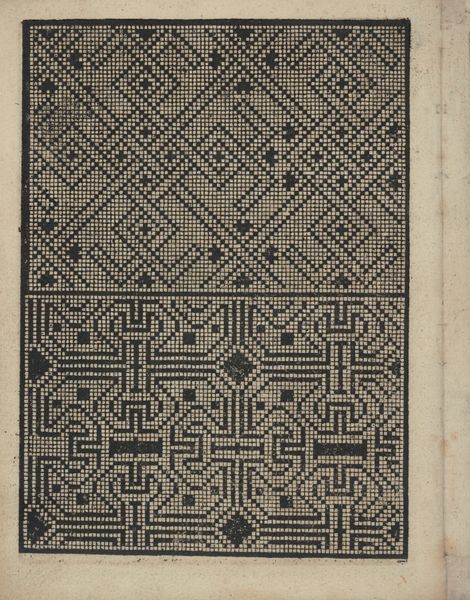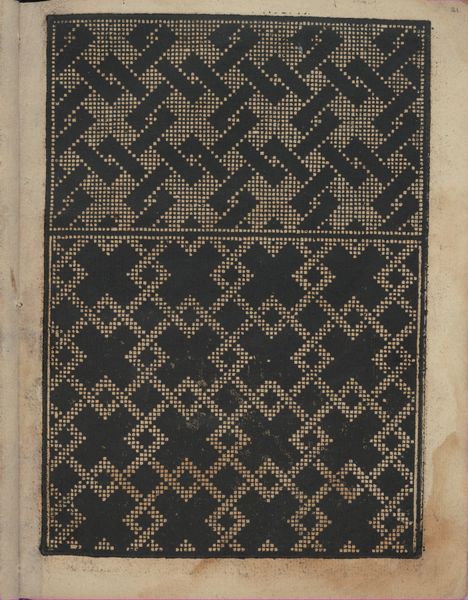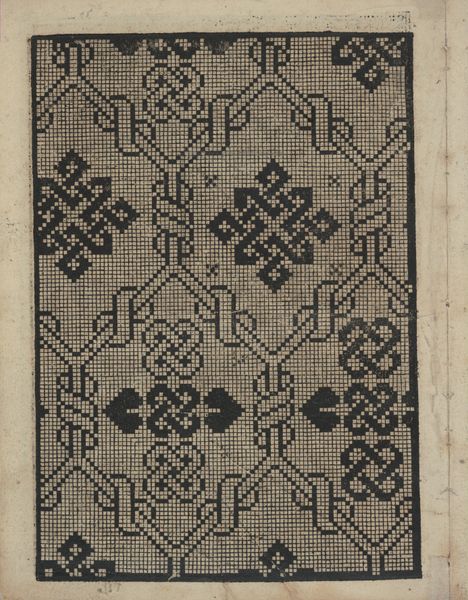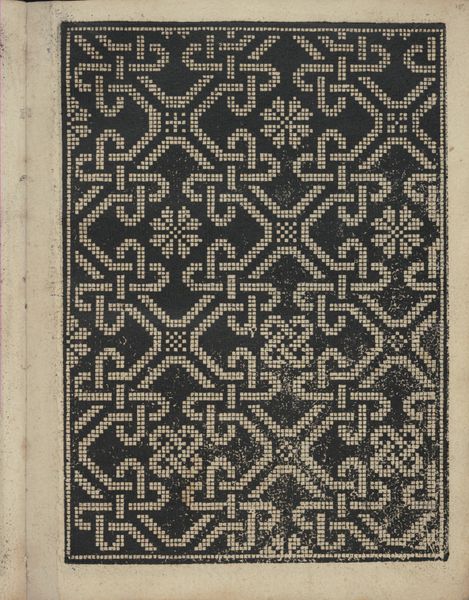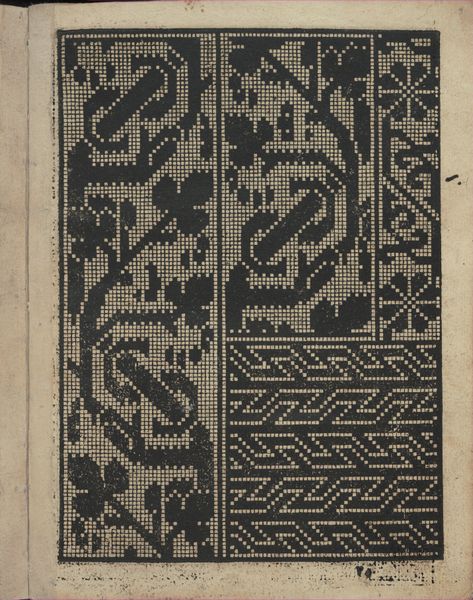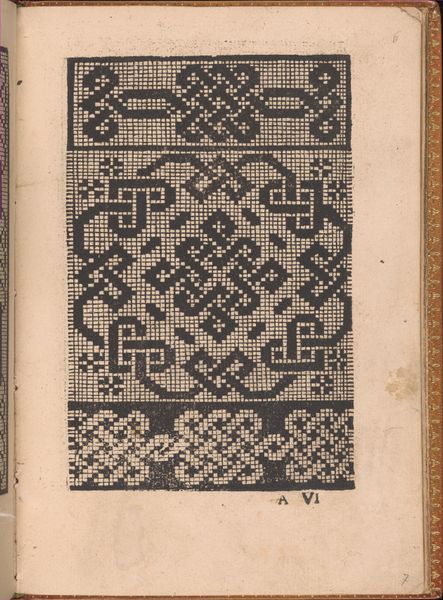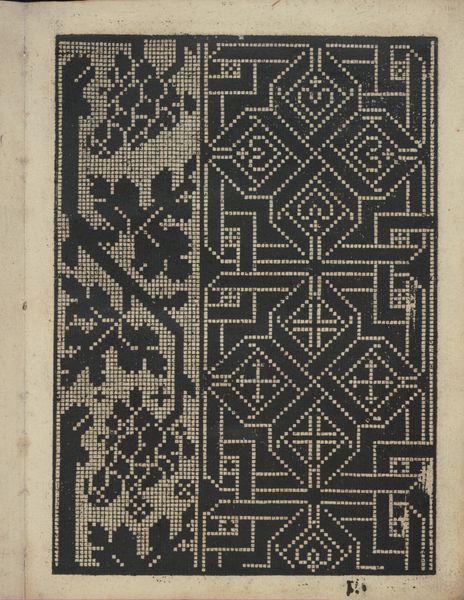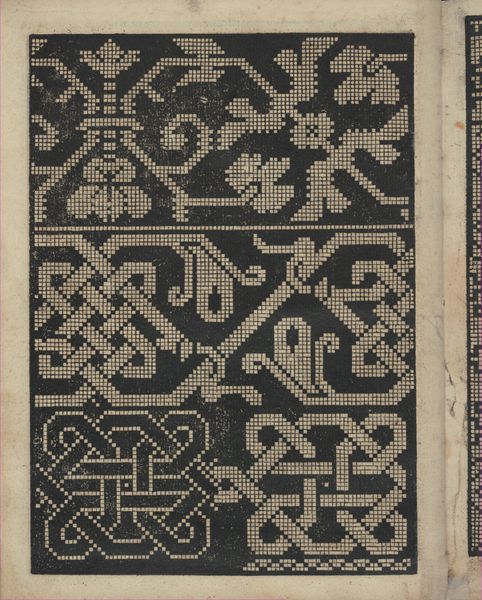
Libbretto nouellamete composto per maestro Domenico da Sera...lauorare di ogni sorte di punti, page 2 (recto) 1532
0:00
0:00
drawing, print, paper
#
drawing
# print
#
book
#
paper
#
geometric
#
geometric-abstraction
#
italian-renaissance
#
calligraphy
Dimensions: Overall: 8 1/16 x 6 5/16 in. (20.5 x 16 cm)
Copyright: Public Domain
Curator: Here we have a page from "Libbretto nouellamete composto per maestro Domenico da Sera...lauorare di ogni sorte di punti," created in 1532 by Domenico da Sera. It's an early printed book showcasing patterns for needlework. Editor: It strikes me immediately as both ancient and surprisingly modern. The stark black lines against the aged paper give it an air of gravitas, yet the patterns themselves seem almost like minimalist art. Curator: These books played a crucial role in disseminating design ideas during the Renaissance. Before widespread printing, knowledge was often confined to guilds or wealthy patrons. Publications like this democratized access to fashionable patterns. Editor: Indeed, the geometric motifs resonate with a deep symbolic history. Look at the knot patterns—they speak of continuity, interconnectedness, even eternity in some cultures. It’s intriguing to see such potent symbols applied to what might seem like everyday domestic crafts. Curator: The act of creating these intricate needlework designs, I think, granted agency and a degree of artistic expression, particularly for women. Stitching and embellishing became forms of cultural production, shaping the visual landscape of the home and even projecting social standing. Editor: Absolutely. The fleur-de-lis appears here. In later centuries it was loaded with noble meaning, but it evolved from a plant to a religious symbol and a statement of authority and cultural affiliation. Curator: What's also interesting to me is how the format of this book, intended for practical use, elevated the status of textile work and pattern design within the broader visual culture. It's an intersection of utility and artistry. Editor: Looking at this print has been quite insightful. The way these motifs intertwine allows for an expression of heritage through simple repeated forms. Curator: It underscores the profound connection between design, social history, and the enduring power of visual language in even the most domestic settings.
Comments
No comments
Be the first to comment and join the conversation on the ultimate creative platform.
